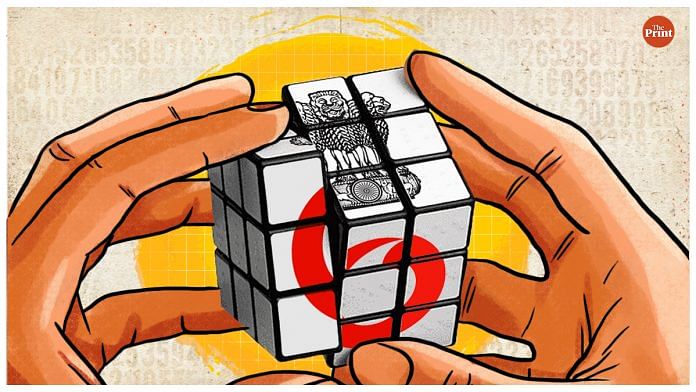The financially stressed telecom company Vodafone Idea (Vi) has opted to convert interest on adjusted gross revenue (AGR) and spectrum dues into government equity. Following the conversion, the government will hold around 35.8 per cent of the shares of the company. This will make the government the single largest shareholder in Vi.
The option to convert interest payments on the deferred spectrum instalments and AGR into equity was part of the rescue package announced by the government last year. While the government’s stake in cash-strapped Vodafone Idea could help the company raise funds and attract potential investors, it should be an interim caretaker for the company and should exit once the company’s financial position stabilises or a sound resolution is worked out.
Deteriorating financial health of telecom companies
The financial condition of telecom companies has been under stress for more than a decade due to differing legal interpretations of AGR. The scope of AGR has been under litigation, and the regulatory burden has stifled the financial health of telcos.
In September last year, the government announced a rescue package to address the short-term and long-term issues of telecom companies, including a four-year moratorium on unpaid dues. However, the companies have to pay interest if they opted for a moratorium, as Bharti Airtel and Vodafone Idea did. While Bharti Airtel decided to pay the interest amount to the government, Vodafone Idea opted for the conversion of interest worth Rs. 16,000 crore on deferred spectrum and AGR into equity.
For a government that has outlined its intent to divest its stake in public sector enterprises, becoming a major shareholder in a private telecom operator may seem ironic, but globally, there are a number of precedents where the government became the majority shareholder of a private company to support it in the short-term.
Also read: 5 factors will shape Indian economy in 2022, and you can be cautiously optimistic despite Covid
Government takeover of companies
During the global financial crisis, a number of institutions were brought into public ownership to prevent a system-wide crisis. With government intervention, some of these were able to revive their businesses, while others were subject to an orderly resolution. The UK Treasury bailed out NatWest Group — formerly known as Royal Bank of Scotland — by injecting £45 billion to prevent a meltdown in the banking sector, but later took an 84 per cent stake in the bank. The government plans to return the bank to private ownership by 2025-26. The Treasury has been selling its shares in a phased manner to return the taxpayer-owned bank to private ownership.
Similarly, Northern Rock, Britain’s fifth largest mortgage lender, was nationalised in 2008 when global money markets were in trouble. Most of its assets fell under the remit of a new agency, UK Asset Resolution Limited, which wound down and sold off its assets. Northern Rock was split into two entities, a good bank and a bad bank, to facilitate its orderly wind-down. Through a series of asset sales transactions, the company was returned fully to the private sector last year.
In the US, the prominent automaker General Motors ran out of cash due to a fall in sales during the economic downturn. The company filed for government assisted bankruptcy, under which the US government provided $30 billion in financing to get the company through bankruptcy and took a 60 per cent stake. Earlier, the government had infused $20 billion. There was no government official on the board of the company. While the government owned shares in the company, it did not try to micromanage it. During the period, the company reorganised its leadership, sold off unprofitable brands and focussed on producing more fuel-efficient cars and trucks. By 2013, the US government had sold off more of its General Motors shares to the public.
The examples above show that the business of the entity can be kept running even though its existing legal nature may be terminated and reconstituted under temporary public ownership. In resolution parlance, such an arrangement is referred to as the ‘bridge institution’ — bridging the transition between one form of private ownership and the next. A bridge institution is a temporary institution established and operated to acquire some or all of the assets and liabilities of a troubled institution till a final resolution is accomplished.
Breathing space for Vodafone Idea
As of September end, Vodafone Idea had a gross debt of Rs 1,94,000 crore. While the government will become the largest shareholder with the exercise of the option to convert debt into equity, it has indicated that it does not have the intent to run the telecom business. Though the government’s support should provide the necessary liquidity and support to raise funds, it should formulate a time-bound exit strategy.
A sound rules-based framework to exit from the company and sell the government’s share of Vodafone Idea to the public should be put in place upfront. It should prevent any future government or political leadership from starting to treat the firm as a public sector company and making it a permanent liability to the taxpayer.
Ila Patnaik is an economist and a professor at National Institute of Public Finance and Policy.
Radhika Pandey is a consultant at NIPFP.
Views are personal.
Also read: Keep calm & continue reform — mantra for Modi govt and RBI as Indian economy braces for 2022






